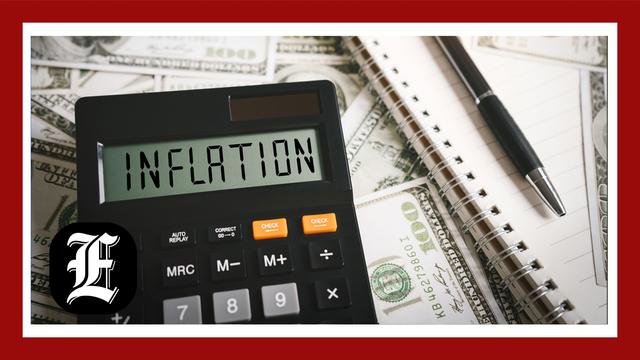President Joe Biden bragged at the start of the year that inflation was coming down and it was lower than “any other major economy at the time.” While the first point was true — inflation was falling — it is no longer so, and the Federal Reserve’s battle to control price rises has backslid since. This is largely because of the president’s profligate spending, and, despite Democratic claims otherwise, data continue to demonstrate that inflation is worsening. Voters know it.
In the first four months of this year, consumer price index inflation rose from 3.1% to 3.4% on a 12-month annualized basis. In absolute terms, the CPI has risen by 1.4% in the past four months, or 4.2% on an annualized basis. That’s more than twice the Fed’s maximum target of 2%. While core CPI, a Fed-preferred measure that strips away the volatile categories of food and energy, has slightly decreased on a 12-month annualized basis from 3.9% in January to 3.6% in April, core CPI has increased by 1.5% in absolute terms, or 4.5% on an annualized basis.
Worse, producer price index inflation, a leading indicator because wholesale prices are eventually passed on to the consumers, has more than doubled since January from 0.9% to 2.2% a year. While April’s data for personal consumption expenditure price inflation is still forthcoming, PCE inflation soared in March to its highest level since November of 2023. On a three-month annualized basis, a more precise picture than the annual measure, the Fed’s preferred inflation measure of core PCE rocketed from 3.7% in February to 4.4% in March, more than twice the Fed’s 2% maximum inflation target.
Despite Biden’s assertions to the contrary, voters understand this, and it feeds into expectations. The Federal Reserve Bank of New York’s April survey found that annual median inflation expectations among consumers rose from 3% to 3.3%, with gasoline inflation expectations rising to 4.8% and food price inflation expectations rising to 5.3%.
Median earnings growth expectations declined to 2.7%, and on this front, the survey respondents are also largely correct. Since Biden took office, real average weekly earnings have fallen by nearly 5%. When the Fed brought down inflation from its near double-digit peak in 2022, it seemed on pace to undo some of these losses, but since the end of last year, the average real weekly paycheck has shrunk by another 0.5%. Over the past three years, inflation — the silent and unilaterally issued tax by a greedy government aiming to rack up consecutive $2 trillion deficits — has eaten up the equivalent of a paycheck-and-a-half each year of the average worker’s 26 annual paychecks.
While average voters may not understand the minutiae of macroeconomics, they know that Biden’s wasteful fiscal policy is diametrically opposed to the monetary tightening wrought by the Fed. In a recent Financial Times-Michigan Ross poll, the majority of registered voters said their own finances were worse off since Biden took office, with half of respondents blaming his policies in particular.
CLICK HERE TO READ MORE FROM THE WASHINGTON EXAMINER
The grand irony of Biden’s insistence on continuing with his inflationary fiscal policies is that they are increasingly undermining the one piece of good news he can deliver before Election Day. Whereas the Fed projected it would slash the federal funds rate from its 23-year high at least three times at the start of this year, worsening inflation, further fueled by Biden’s open borders and regressive student debt cancelation for upper classes, has led bond markets to price in a one-in-three chance that the Fed does not cut interest rates at all before the election.
Voters may be able to stomach the painful medicine of monetary tightening to stanch inflation, but with both price hikes and interest rates staying higher than most generations have experienced, Biden has nobody but himself to blame if voters decide to send him to belated retirement.
